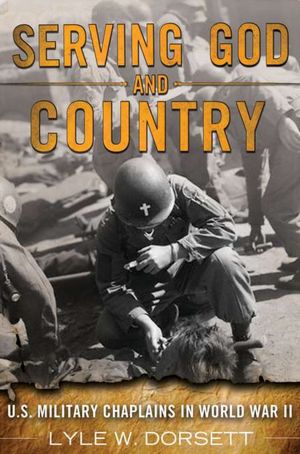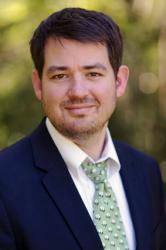I frequently noted in the field, how chaplains – to a man – sought out front line action. And I assume that was because, as one put it, at the time: ‘There is where the fighting man needs God most – and that’s where some of them know him for the first time. – U.S.M.C. Commandant A.A. Vandegrift, 1945
The last two decades has seen a surge in interest in popular historical study of America’s role in the Pacific and Europe during World War II in films and books but little to no individual attention has been given to the role of military chaplains. There were never enough chaplains to serve American soldiers, sailors, Marines, and airmen, but as Dorsett points out those that served found innovative and courageous ways to reach the men. “They can’t say that the church forgot them, when they were called into service and henceforth in their lives they will forget the church,” declared Lutheran Chaplain Edward K. Rogers. “They may forget the church and God, but the church and God’s pastors or priests did not forget them.” Chaplains were integral to America’s victory in Europe and the Pacific. This is the argument put forward in Serving God and Country: US Military Chaplains in World War II by Lyle Dorsett.
Outside of the famous four U.S. Army chaplains who sacrificed their lives to save fellow military and civilian men when the transport Dorchester sank in 1943, there is very little popular historical assessment of the enduring role of chaplains in the war and how they helped shape a post-war society. Chaplains broke new ground when it came to racial desegregation in training classes and contributed to greater ecumenical understanding between churches, denominations, and synagogues. “The clergy integrated well and became pioneers in the integration of the U.S. Armed Forces before President Harry S. Truman’s executive order 9981 of July 1948,” declared Dorsett.
Integration of ideas and practical ecumenicsm also flourished. For example, some Protestant pastors, while well educated, previously may have had limited interpersonal contact with other traditions and faiths like Judaism or Catholicism. As one chaplain pointed out, “It was harder to speak ill of one’s faith when that person was a friend.” Chaplains also had to be trained in the basic rudiments of other faiths in order to offer proper religious counsel for servicemen.
Undeniably, the United States on the eve of Pearl Harbor in 1941 was remarkably less secular than today. Chaplains or “chappies” were, with very few exceptions, Protestant, Roman Catholic, or Jewish. Parents, especially mothers, were comforted by the fact that their sons had professional shepherds to guide them in the field and throughout their military service. World War II was the first American conflict where published images, especially from the Pacific at bloody battles like Tarawa, would relay disturbing images to Americans at home. Chaplains were pressed to the limit on both fronts of the war, but the savage fighting of the Pacific island hopping campaign tested military chaplains to minister in what many combatants called “the depths of hell.” “By their patient, sympathetic labors with the men, day in and day out and through many a night, every chaplain I know contributed immeasurably to the moral courage of our fighting men,” added Admiral Chester W. Nimitz.
Perhaps the best books that captured the ferocious fighting in the Pacific is Eugene B. Sledge’s With the Old Breed. Still a popular study on the nature of war, the author captures the horrific truth of what the Marines faced in the Pacific. One wonders after reading the account, how it is possible to somehow put your life back together as a civilian? This was true of the military chaplains who, while technically non-combatants, not only did they suffer extremely high casualty rates, and paid a heavy emotional and psychological price for presiding over so many burials. Chaplains, along with their regular military counterparts, experienced the toll of combat stress and fatigue.
In Europe, there are iconic pictures of chaplains serving communion to paratroopers and infantryman before D-Day. These chaplains jumped out of planes and landed on the beach to be with their men. They were invaluable to the American war machine as they pushed closer to Germany, especially Jewish chaplains as they cared for liberated concentration camp survivors. Because of their education, many chaplains spoke foreign languages and created a strong rapport with the local populace.
At the onset of war, Americans organized a cohesive, bureaucratic, and unified response to the global crisis. Little attention was paid to the individual but Rabbi Morris Kertzer offered this assessment:
The chaplains Corps’ greatest achievement, I believe, was in making the soldier believe that the Army did care about him as an individual. We were a symbol to him, a guarantee that the Army, recognizing its fallibility in dealing with large masses of men, was sufficiently concerned for his welfare to set aside seven thousand trouble-shooters in the Chaplains Corps to short-circuit red tape, to right wrongs, to deal with injustices. We talked and talked with G.I. Joe. We made him laugh when his heart was heavy. We passed his bed of pain with a pleasantry. We gave him a sense of his own importance. Together with the medical corps, we were the soul of the army.
Today, too, military chaplains are invaluable to America’s Armed Forces. Once again, chaplains have been tested in new ways as America has been pressed into war in Iraq and Afghanistan. For many young men and women in the military, death has become a constant companion because of combat. Long deployment, separation from family, a disinterested civilian populace, and physical and emotional wounds have exacted their toll on America’s fighting men and women. New social experimentation and budget constraints also threaten the mission and military preparedness. For many, it is the chaplain who brings light and hope to those don’t have to look far to find weariness and despair.

